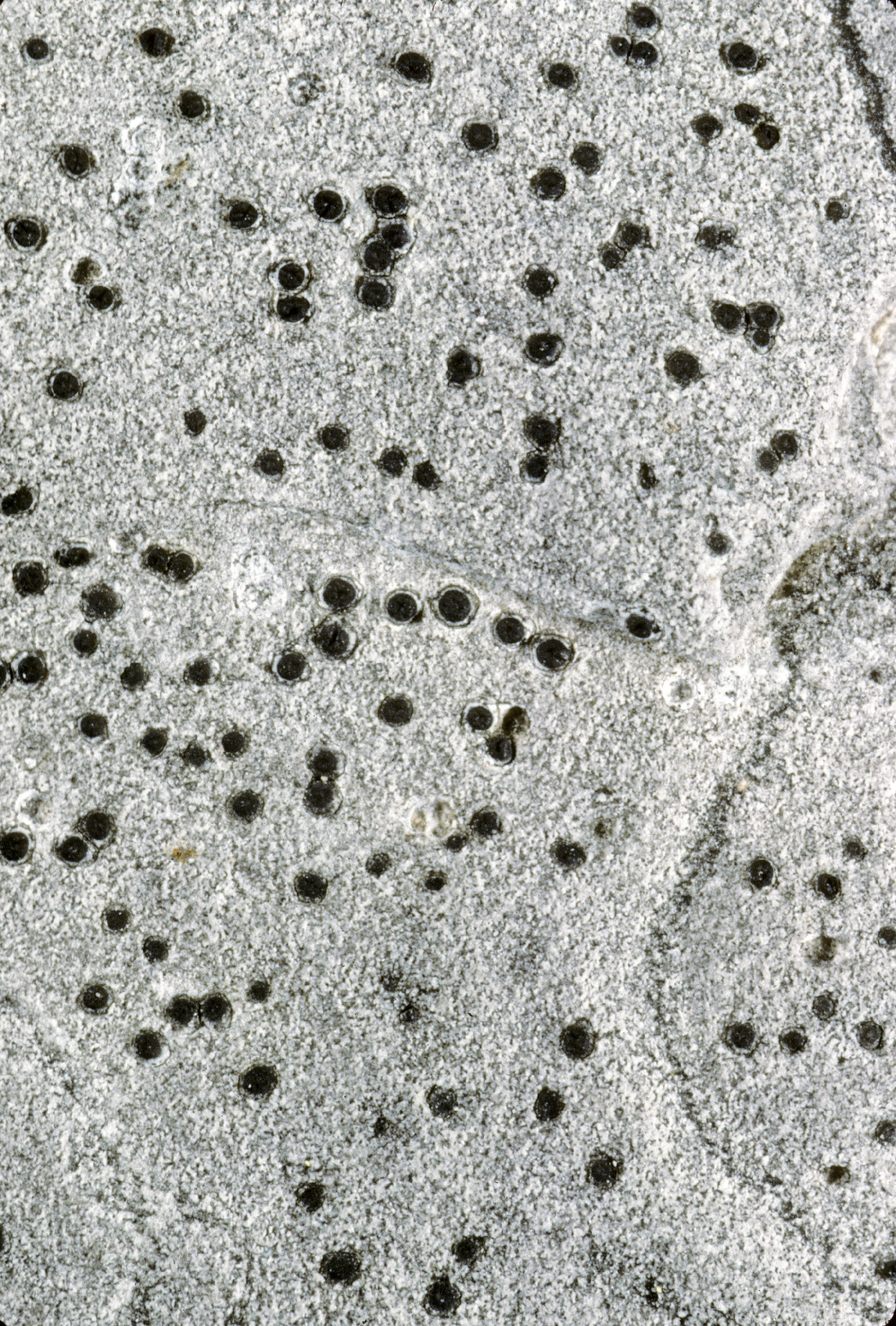
Consortium of Lichen Herbaria
- building a Global Consortium of Bryophytes and Lichens as keystones of cryptobiotic communities -
- Home
- Search
- Images
- Species Checklists
- US States: O-Z >
- US National Parks
- Central America
- South America
- US National Parks
- Southern Subpolar Region
|
Family: Verrucariaceae |
Nash, T.H., Ryan, B.D., Gries, C., Bungartz, F., (eds.) 2002. Lichen Flora of the Greater Sonoran Desert Region. Vol 1. Life habit: lichenized Thallus: crustose, immersed or superficial, continuous or areolate, or nearly lacking, with or without a dark hypothallus upper surface: pale grayish to blackish brown photobiont: primary one a chlorococcoid alga, secondary photobiont absent Ascomata: perithecial, immersed in thallus or in pits in limestone, or prominent to superficial, subglobose to pyriform involucrellum: present or absent; exciple: pale or dark, formed of tangentially compressed cells; periphyses: simple to branched; interascal filaments absent; hymenial gel I+ orange-red, KI+ blue asci: clavate, wall apically thickened, often with a small ocular chamber, non-amyloid, 8-spored ascospores: biseriate, 1- to 3-septate, occasionally up to 5-septate or with 1-2 longitudinal septa, ellipsoidal to oblong-ellipsoid or ovate, colorless, smooth, non-halonate Conidiomata: not observed Secondary metabolites: none detected Geography: world-wide, mainly temperate Substrate: usually on rock (mostly limestone), rarely on other substrates, never maritime. Notes: The genus is closely related to Verrucaria and Polyblastia and only separated by ascospore septation. The spores in Thelidium are mainly 2-celled. |
Powered by Symbiota









